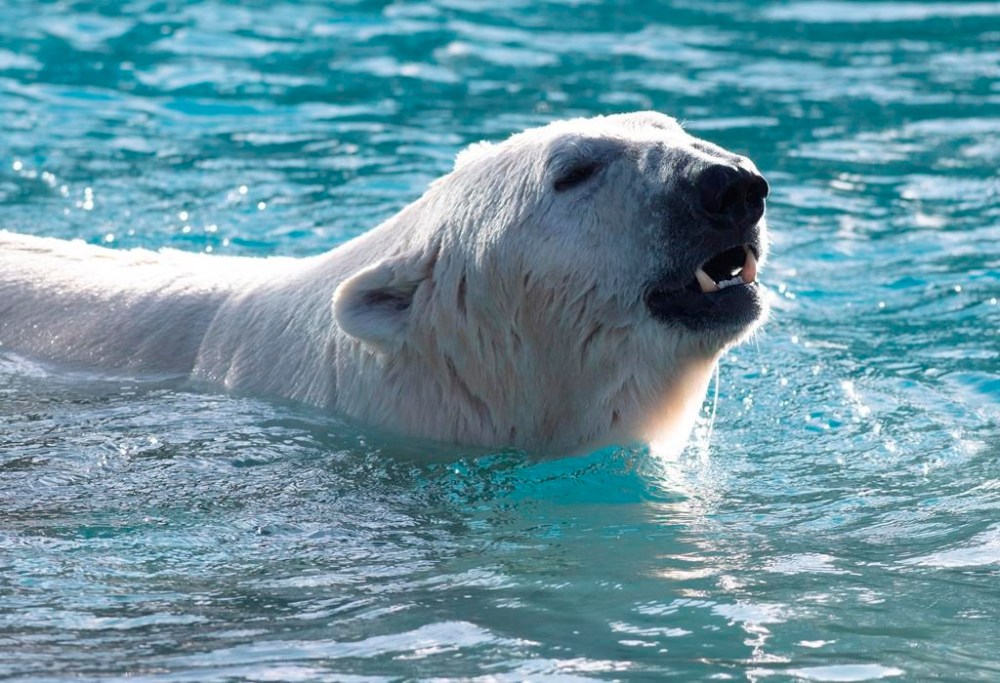Research from Alaska finds more polar bears are exposed to pathogens
Advertisement
Read this article for free:
or
Already have an account? Log in here »
To continue reading, please subscribe:
Monthly Digital Subscription
$0 for the first 4 weeks*
- Enjoy unlimited reading on winnipegfreepress.com
- Read the E-Edition, our digital replica newspaper
- Access News Break, our award-winning app
- Play interactive puzzles
*No charge for 4 weeks then price increases to the regular rate of $19.00 plus GST every four weeks. Offer available to new and qualified returning subscribers only. Cancel any time.
Monthly Digital Subscription
$4.75/week*
- Enjoy unlimited reading on winnipegfreepress.com
- Read the E-Edition, our digital replica newspaper
- Access News Break, our award-winning app
- Play interactive puzzles
*Billed as $19 plus GST every four weeks. Cancel any time.
To continue reading, please subscribe:
Add Free Press access to your Brandon Sun subscription for only an additional
$1 for the first 4 weeks*
*Your next subscription payment will increase by $1.00 and you will be charged $16.99 plus GST for four weeks. After four weeks, your payment will increase to $23.99 plus GST every four weeks.
Read unlimited articles for free today:
or
Already have an account? Log in here »
Hey there, time traveller!
This article was published 23/10/2024 (411 days ago), so information in it may no longer be current.
Researchers out of Alaska say some polar bears in the Arctic now face a greater risk of contracting several pathogens that weren’t a threat to the animals decades ago.
The study, published in the peer-reviewed journal PLOS One, says the bear population in the Chukchi Sea between Alaska and Siberia doesn’t appear to be harmed by the illnesses, but the findings are among the most rapid changes for such exposures ever reported among polar bears.
The study released on Wednesday says it highlights the need for increased surveillance of the polar bear population, including to see if the pathogens remain in flesh that could be consumed by people.

Researchers compared blood samples taken from the area’s bears from 1987 to 1994 and compared them with samples taken from 2008 to 2017.
The report says they found statistically significant increases in pathogens related to five illnesses, with the highest being a parasite found in many common animals including cattle, goats, wolves and foxes, which jumped from 13.7 per cent exposure to 65 per cent.
Lead author Karyn Rode, a wildlife biologist with the U.S. Geological Survey’s Alaska Science Center, says the increase in that parasite may be linked to decreasing sea ice that forces bears to spend more time on land.
“As sea ice loss has occurred, polar bears in the population that we’ve studied specifically have increasingly summered on land, and also females in this population den on land,” she says.
“So, females are spending more time on land than males do, and females had higher exposure to some pathogens that were terrestrially based. So, that sort of does follow the path of: there’s been environmental change, specifically for polar bears, that’s changed their behaviour, that’s changed their exposure.”
Rode says the findings suggest it’s not just polar bears that are being exposed to an increase in pathogens, but also the animals that they eat.
In Arctic communities, she says the polar bear is hunted for its meat.
“I think it just goes along with a lot of other literature that there are changes in pathogen transmission pathways. And these are pathogens that we know can cause disease in wildlife and in humans.”
She says the study emphasizes the need for greater surveillance.
The study looked at whether bears had been exposed to pathogens, she notes, not whether high levels remained in the flesh that could be consumed by people.
“The next step is to try to better understand what is the risk to people who are consuming them,” Rode says.
“People have gotten some of these diseases from other wildlife, so it can happen. We don’t know if polar bears have it in their tissues that’s being consumed in a way that could be transmitted.”
She says that will be the next step to be studied.
This report by The Canadian Press was first published Oct. 23, 2024.




